Taj Mahal
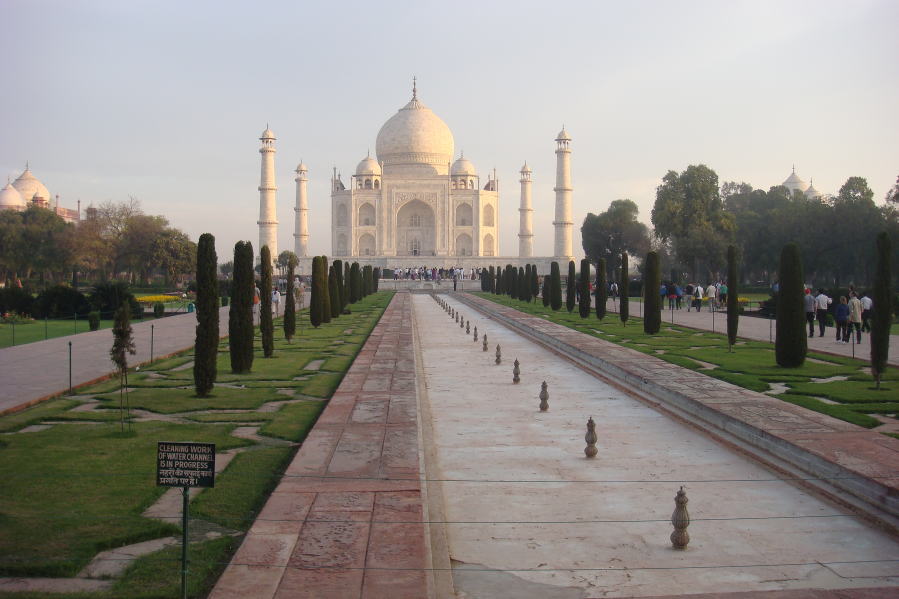
Copyright photograph of Taj Mahal by Dr.Junhaku Miyamoto
Taj Mahal
The Taj Mahal is a mausoleum, an external free standing building constructed
as a monument enclosing the
interment space or burial chamber of a deceased person or persons, which
is located in Agra, India, built by
Mughal Emperor Shah Jahan in memory of his favorite wife, Mumtaz Mahal.
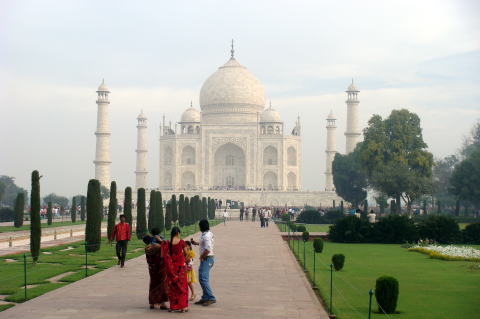
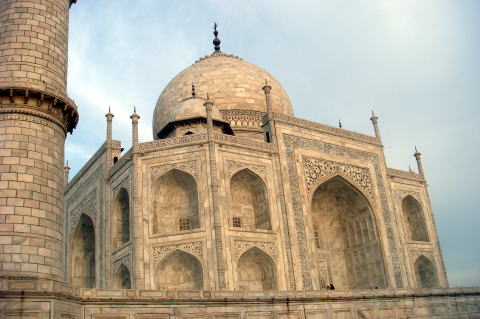
The white domed marble mausoleum of Taj Mahal at the closer point
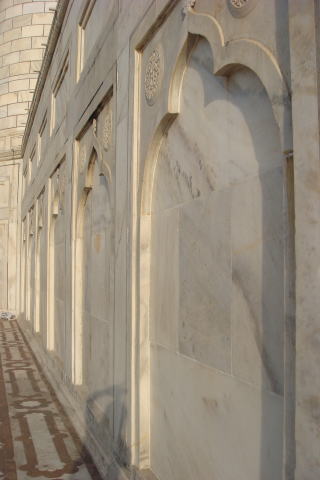
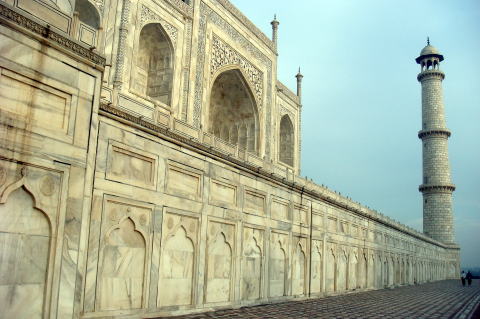
Beautifully decorated white domed marble walls
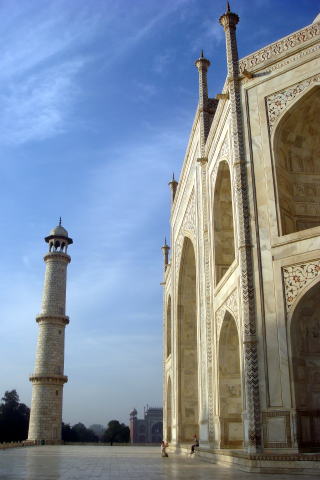

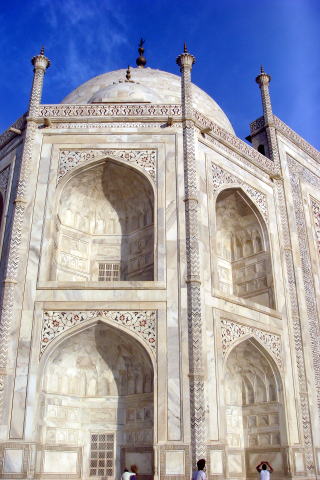
A beautifully decorated white domed marble mausoleum
The Taj Mahal is considered the finest example of Mughal architecture,
a style that combines elements from
Persian, Indian, and Islamic architectural styles. In 1983, the Taj Mahal
became a UNESCO World Heritage
Site and was cited the jewel of Muslim art in Indiaand one of the universally
admired masterpieces of the
world's heritage. While the white domed marble mausoleum is its most familiar
component, the Taj Mahal
is an actually an integrated complex of structures. Building began around
1632 and was completed around
1653, and employed thousands of artisans and craftsmen.
Source: Wikipedia
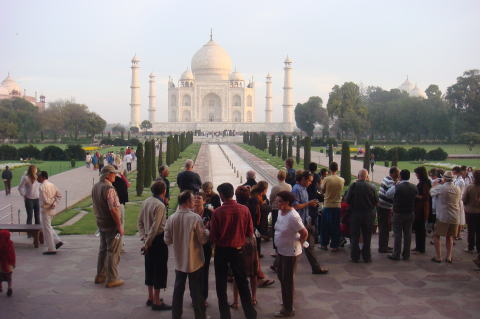
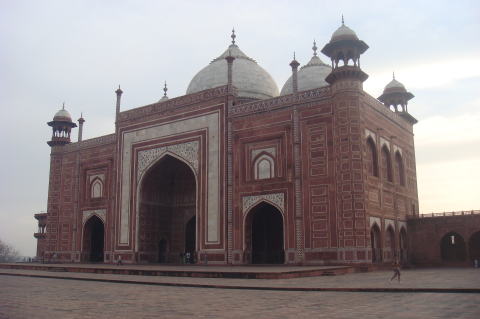
(L) Many tourists from the Western Countries (R) Taj Mahal mosque
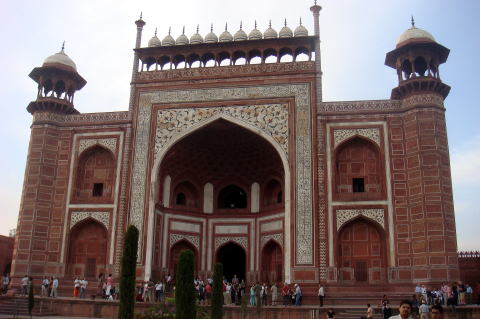
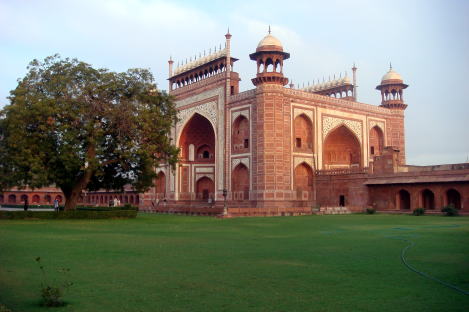
Grand Entrance Building to the Taj Mahal Complex
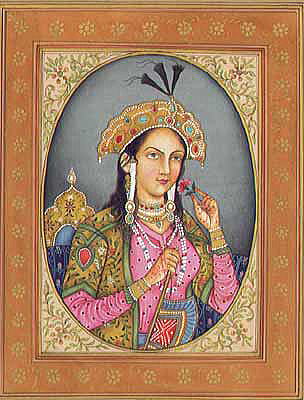
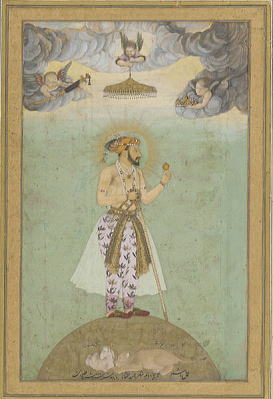
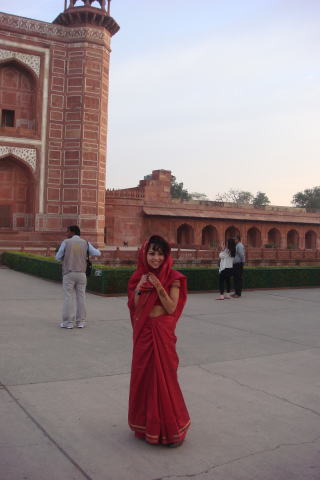
(L) Artistic description of Mumtaz Mahal l
(M) Shah Jahan, who commissioned the Taj Mahal from the Smithsonian Institution
(R) A charming woman visitor in a traditional sally style
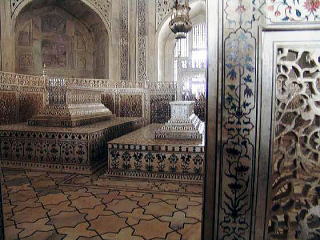
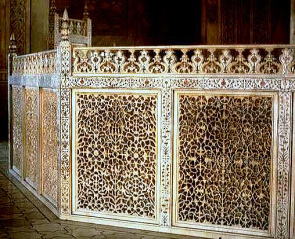
(L) Tombs of Shah Jahan and Mumtaz Mahal (R) Jali screen surrounding the
cenotaphs
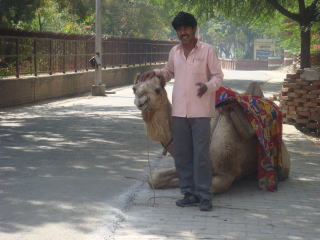
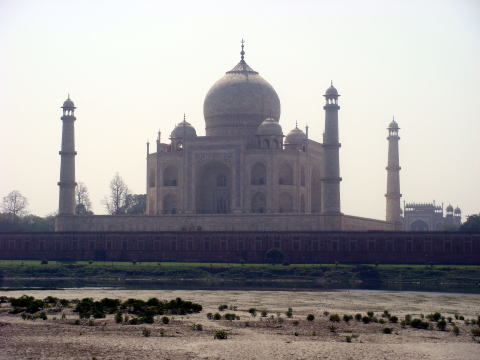
(L) A camel owner waiting for a tourist near the bank of Yamuna River
(R) The Taj Mahal viewed from the Yamuna River
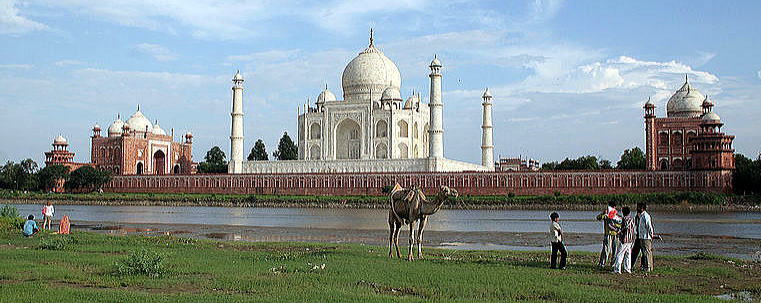
The Taj Mahal seen from the bank of the river of Yamuna (Wikipedia)
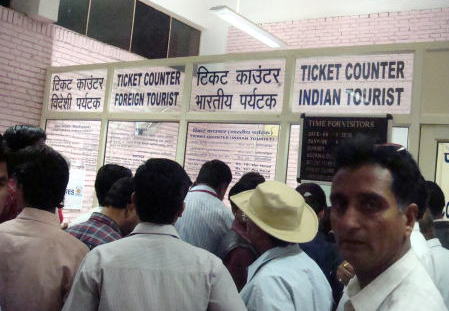

(L) Entry fee for foreign tourists: Rs. 750, vs, for Indian tourists: Rs.20
A foreigner must pay 37.5 times more money than the Indians.
(R) Admission ticket to Taj Mahal
Roadside scenery between Agra and NewDehli

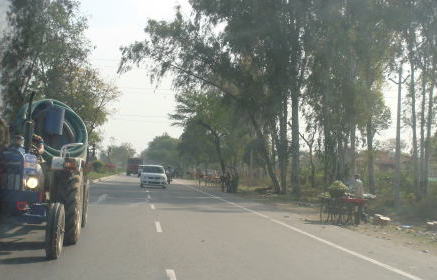
(L) A classic bus at a local town (R) A fruit roadside shop along the highway
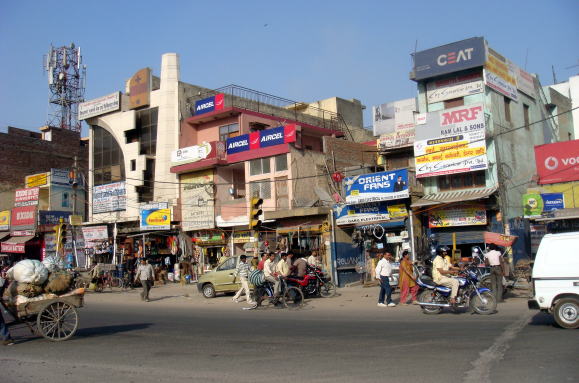

A bustle of a local town
タージ・マハルは、インド北部アーグラにある総大理石造のインド=イスラーム文化の代表的建築である。
ムガル帝国 第5代皇帝シャー・ジャハーンが愛妃ムムターズ・マハルの死(1630年)を悼んで22年の
歳月をかけて建設され、4本のミナレット(尖塔)に囲まれた霊廟である。1983年にユネスコの世界遺産
(文化遺産)に登録されており、インド観光の目玉ともなっている。
タージ・マハルを造るための建材は、インド中から1,000頭以上もの象で運ばれてきたといわれ、大理石は
ラージャスターン地方産、その他、碧玉はパンジャーブ地方から、翡翠は遠く中国から、トルコ石はチベット
から、ラピス・ラズリはアフガニスタンから、サファイアはスリランカから、カーネリアン(紅玉髄)は
アラビアから持ち寄られたものだという。全体で28種類もの宝石・鉱石がはめ込まれていた。
その頃には隆盛を極めたムガル帝国の国庫も、度重なる建設事業により底をついていたとの説がある。晩年の
彼は息子のアウラングゼーブ帝によってアーグラ城に幽閉され、タージ・マハルを毎日眺めては涙を流して
過ごしたと伝えられている。
タージ・マハルはヤムナ川の側から見ると少し違った様相を示す。こちら側には観光客の姿はほとんどなく、
のんびりと時を過ごすことが出来る。正面入口からの入場は大変である。先ず入場券の売り場の長い列に
じっと我慢せねばならない。インドでは外人観光客に数倍の料金を請求することが多いが、このチケット
オフィスでも例外でない。外国人用の入場料はインド人の37.5倍である。念のために書き添えるが、
この料金格差は公式に認められたものである。善意に解釈すればインド国民の収入に配慮した料金とも
とれるが、国外から訪れるものからはなんでも搾り取れとの意向も垣間見られる。
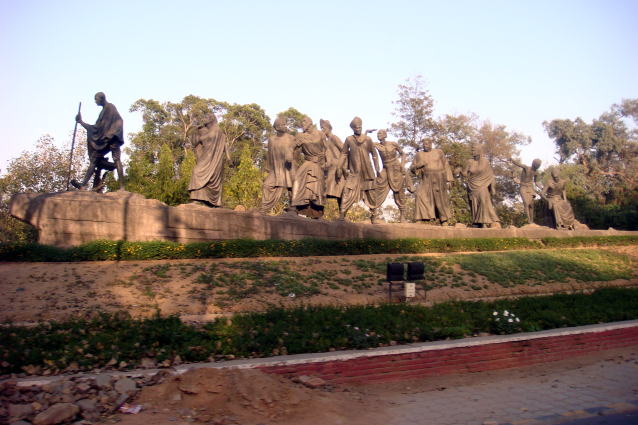
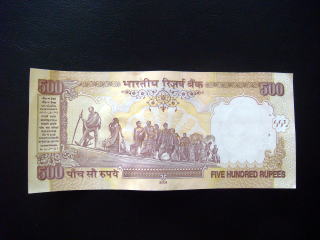
(L) Mahatma Gandhi travels around India with his disciples. マハトマ・ガンディーが弟子たちを連れてインド国内を遍歴ː
写真はアーグラからの移動中、デリー近郊で撮影
(R) 500ルビー紙幣
一日一便しかない航空機が欠航となったため( ホテルからそう伝えられたが、ホテル手配のタクシーを利用
させるための偽装工作かどうか、今となっては真偽のほどは分からない )ホテル・トラベルデスクの手配で
アグラからニューデリーまでタクシーで移動した。アグラ駅近くではひどい交通渋滞に巻き込まれた。交差点の
中心では交通警官が手信号で警笛を鳴らし続ける車の列を誘導していた。空気は極度に汚染されていると
思われるが、ガスマスクなしでも大丈夫なのであろうか。断続的に有料道路に入ったが、その前後の路面は
比較的よく整備されている。町には廃車寸前のバスが今も活躍している。ハイウエイNH2の道路脇には時折、
果実を売る店が建ち並ぶ。ニューデリーのホテルまで、200キロ、その所要時間は20分ほどの休憩を含め、
約5時間であった。
India
 Arrival to India
Arrival to India  India's hotels
India's hotels  Dehli temples
Dehli temples  Dehli Metro
Dehli Metro  Indian railways
Indian railways  New Dehli
New Dehli
 Agra
Agra  Taj Mahal
Taj Mahal  Cheating in India
Cheating in India Security in India
Security in India  Smoking ban in India
Smoking ban in India  India 2010
India 2010
 ムガル建築の最高傑作、タージ・マハル
ムガル建築の最高傑作、タージ・マハル
 2010年3月執筆 医学博士 宮本順伯
2010年3月執筆 医学博士 宮本順伯
★This Web site is link-free.
The article was written and photographs were taken in March 2010,
by Junhaku miyamoto, M.D., PhD..
Copyright(C) 2010 Junhaku Miyamoto, All rights reserved.